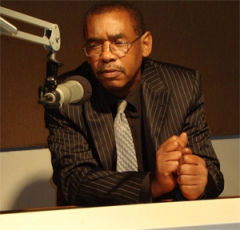 Improve Your Credit Score and Stop Making Someone Else Rich
Improve Your Credit Score and Stop Making Someone Else Rich
by Hollis Wormsby, Jr.
Credit is one of the basic needs in a society such as ours, and as such our credit score, which is a measure of our credit worthiness, is one of our most important assets or liabilities depending on how we handle our obligations.
A good credit score means that one can qualify for premium finance rates. A bad credit score means one cannot get premium rates and may not qualify for financing at all. Why is this important, because most of us cannot pay cash for large purchases such as our homes or our cars? A bad credit score can mean that you cannot get a mortgage or that you only qualify for a sub-prime mortgage. Sub-prime mortgages have higher interest rates and in many cases predatory clauses, such as balloon payments and pre-payment penalties. Predatory lending is considered one of the driving forces behind the ongoing housing crisis.
Let’s look at a simple example of credit impact by looking at a likely mortgage rate with two different credit scenarios. In each scenario all variables except credit score are the same. We have the same income, same amount of debt, and the same asset to be financed. In scenario number one where the credit score is over 700 points and the interest rate is 3.8 percent, the monthly payment on a $160,000 mortgage would be $745. Take a credit score of 550 and a subprime loan at say 8 percent, which still might be too generous, and the payment changes to $1,174, that is a difference of $429 a month that you would be giving away because of a poorly managed credit history.
One more example and I will move on to strategies to raise your score. Let us say that your score is even lower than 550, so low in fact that no reputable lender will lend you money at any rate, and yet you have an urgent need. You are now headed to cash advance hell and interest rates north of 400 percent per year.
So we all agree that our credit score is important and that it is important to do what we can to keep it as high as possible. What are some of the steps we can take to turn our credit score around? I will note that while I am not a financial planner, I do feel somewhat qualified to speak on this subject because due to sloppiness my credit score once dropped to 550, and realizing the impact of that score I set out to change it and today enjoy a score over 700 points and the economic power that comes with it.
I think there are three major components to a person’s credit score. Those components are: your payment history; your percent of available credit, and the age of your accounts. These three factors together make up your credit score. Let’s look at each one separately and also let’s look at what strategy we can employ to improve each component.
The first component is very simple. The best measure of whether you will pay a future debt is your past payment history. Any time you allow a payment to be reported as more than thirty days late, it lowers your credit score. Any time you allow a judgment to be recorded against you, it lowers your credit score. To get the maximum points for this component you have to begin to pay all of your bills on time, and you have to do it for years. Part of my strategy here was to put as many reportable bills as possible on automatic pay, so that they could not be late and I did not have to spend my time worrying about them.
The second component of your credit score is your percent of available credit. This is the ratio between what you owe and how much credit you have available in your revolving accounts. Revolving accounts are accounts like letters of credit and credit cards. A good ratio for maximum score is to try and keep your available credit at close to 80 percent. What does this mean? Let us say that you have total available credit of $10,000, and your outstanding debt is $1,800, this would make your percent of available credit 82 percent and would be an awesome score on this component. But let us say instead that you owe $7,800. In this case your percent of available credit would only be 22 percent and this would drag your credit score way down. Managing this component is one the big challenges in credit rebuilding, because at one level you have to gain credit access, but at the same time you also have to have the discipline not to misuse it.
The final component that is looked at with your credit score is the age of your accounts. One of the big mistakes I made when I began trying to improve my credit score was I closed accounts as I paid them off. On the surface this seems like a good idea, but in reality it lowered my credit score for two reasons. In closing accounts I reduced my available credit, and thus lowered the percent of credit that was available to me, and in closing my older accounts I lowered my credit score further because the age of my accounts became newer. So what I recommend is that you do one of two things with older credit accounts; first you can just stick the cards in a drawer and not use them, but after a year they will probably get cancelled for non- use. Or you could assign a specific bill like your cable bill to a card and use the card only to pay that bill and do automatic payments for the amount of what you charge to the card. The second way is the way that helped me the most, because as you make payments on cards and stay timely they will increase your limit, which increases your credit score.
Having a low credit score can be very embarrassing and very frustrating, but it does not have to be a lifetime sentence. Try these three simple steps: improve your payment history, keep your percent of available credit around 80 percent, and keep your older accounts active, and see if your score doesn’t rise. Unless you are content living in cash advance hell, paying on a sub-prime mortgage, and overpaying for your cars, if you know that you have a challenging credit score, you have to do this. Or at least that’s the way I see it.


